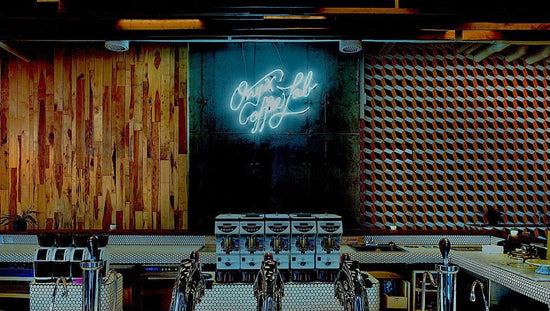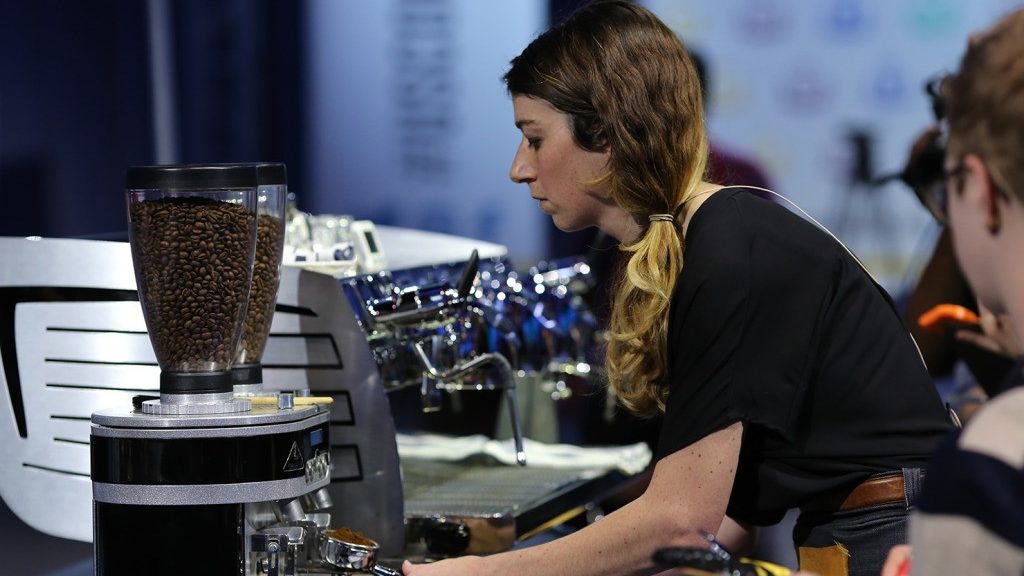Replicating Café Recipes at Home

About 2 weeks ago, I had the best latte of my life. I wasn't in a fancy coffee shop - I was in my kitchen. I was using Onyx Geometry with a brew ratio of 21 grams in, 32 grams out in 29 seconds. I used 64 grams of liquid espresso and 250 grams of steamed milk for roughly a 12 oz latte.
No, I'm not some bumpkin that has never graced the counters of Blue Bottle, Stumptown, Verve or Campos. Heaven's sake, we're headquartered in Portland. The real home of specialty coffee (sorry, Seattle). The reason I could produce something this delicious was that I had the recipe. So, we'll introduce you to a closely held secret in the coffee world:
Your barista, just like a chef, is happy to give you the recipe for your favorite coffee drink.

Coffee shops, like restaurants, don't exist because the coffee drinks produced are so hard to replicate that you have to go there. They exist as an experience. Sometimes, the experience itself trumps the coffee. It's escapism of the highest form. Can I step out and have someone do all the work for me, so I can just sit back and enjoy? There are enough cookbooks to fill the new Starbucks Roastery in China, and yet - people still go out to dinner.
So, now that you know there isn't any competition, here are some questions you should ask your favorite cafe to replicate that drink at home:
What is your espresso recipe for this coffee?
Each bean that comes out of a great shop, like those mentioned above, will have a unique preparation recipe for straight espresso, Americanos and milk drinks. Sometimes this will be the same, but often times not.
What is the Brew Ratio for espresso that you use in your lattes?
The most important piece of a coffee recipe is the brew ratio. For espresso, this is most commonly expressed as a ratio of input (amount of ground coffee in grams) to output (amount of liquid espresso in grams). The brew ratio will have the largest impact on the kinds and intensity of flavors in your coffee.
When you ask a barista about an espresso recipe, they will often give you very specific amounts, e.g. “21 grams in to 30 grams out”. We recommend using that information to create more of a general recipe; instead of being stuck to a tight set of parameters (21g:30g), you can convert it to a more simple ratio (~1:1.5) which can be adapted to your needs and equipment.
What is the Total Brew Time?
Think about brew time as the metric by which you match the fineness of grind at your favorite cafe. If your espresso is ground too coarse, the water will pass by the coffee without fully extracting the most delicious flavors; if it’s too fine, the water will hang out too long and start to pull out bitter or dry flavors out of the coffee.
If a barista says the target time is 28 seconds, you can really give yourself a window of 1-2 seconds around that time (e.g. 27-29 seconds) without experiencing major changes in flavor.
How long do you rest your espresso?
Roasting is an intense process for coffee beans. Espresso happens to be a pretty intense brew method, as well. With that in mind, most roasters let the coffee rest for a few days after roasting before using it to pull shots. Generally, most coffees are well rested and great for espresso 5-7 days after roast. Still, checking with your barista will help you get closer to that ideal shot and it’ll earn you some espresso cred.
For more information on resting your coffee, take a look at our article here: Is your coffee too fresh?
Which milk are you using?
Not all milks are created equal. Different cows, feed types, fat contents, and processing methods will have a big impact on the flavor of a milk. If you can find out what brand and fat content of milk used at your favorite cafe, it will make it much easier to repeat the same quality at home. For a milk test we did at the shop, check out this article.
What is your milk/water to espresso ratio?
This is often the most overlooked factor in replicating a recipe. A latte in one shop may be a cappuccino in another. Ask about how much liquid espresso goes with what quantity of milk. Usually, this will be done by subtracting the total liquid espresso from the size of the cup. This is very important in milk drinks, as usually our attraction to certain types of coffee is that taste of strength.
Did you nail it? Great. Time to work on your techniques.